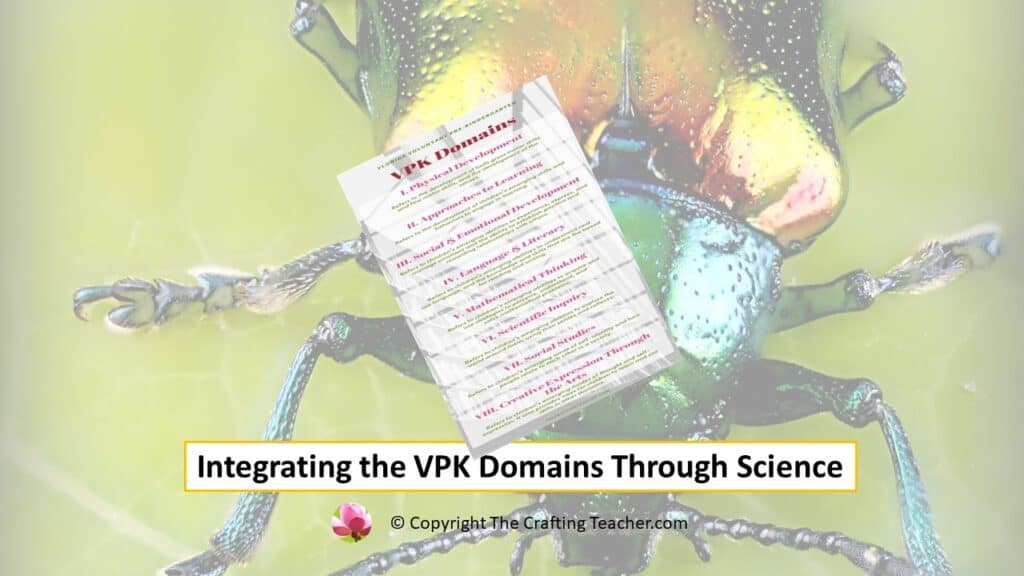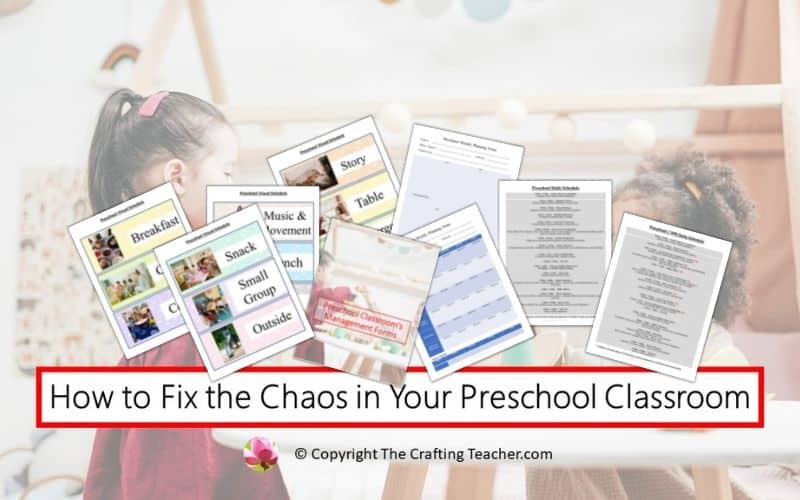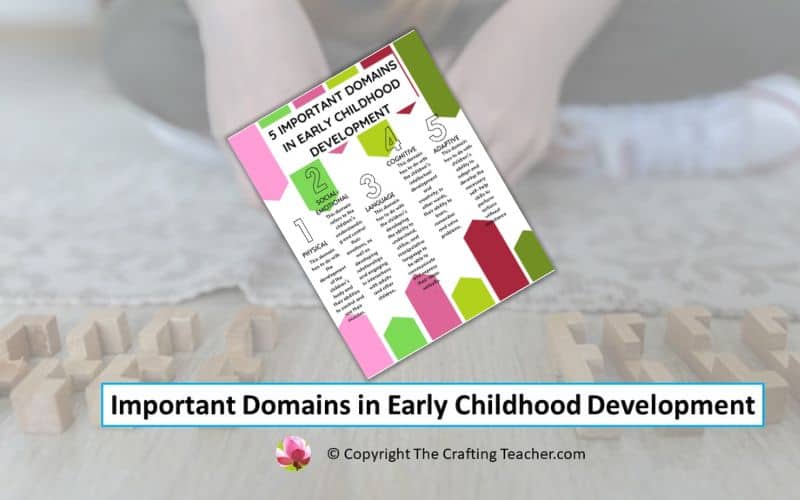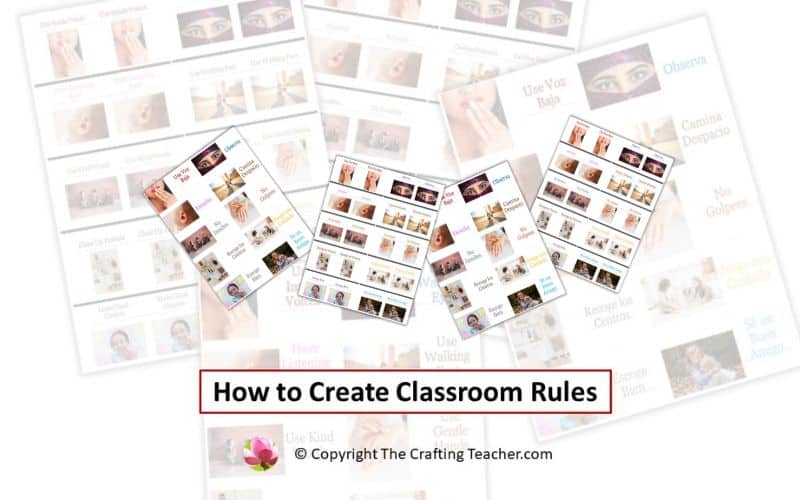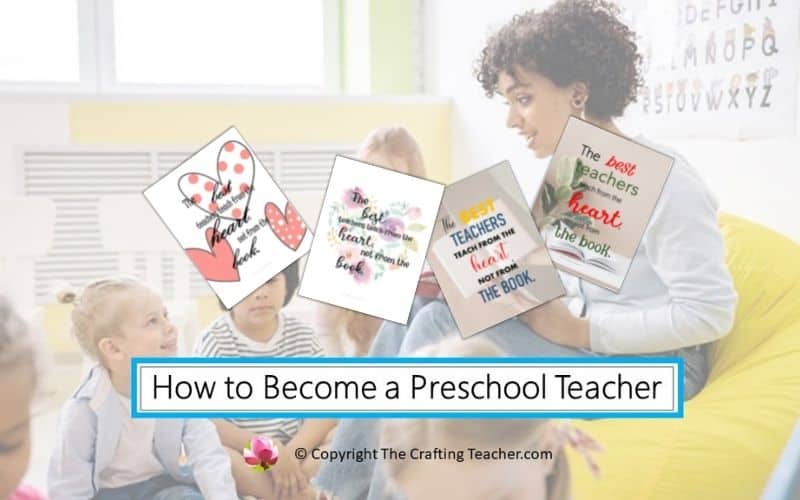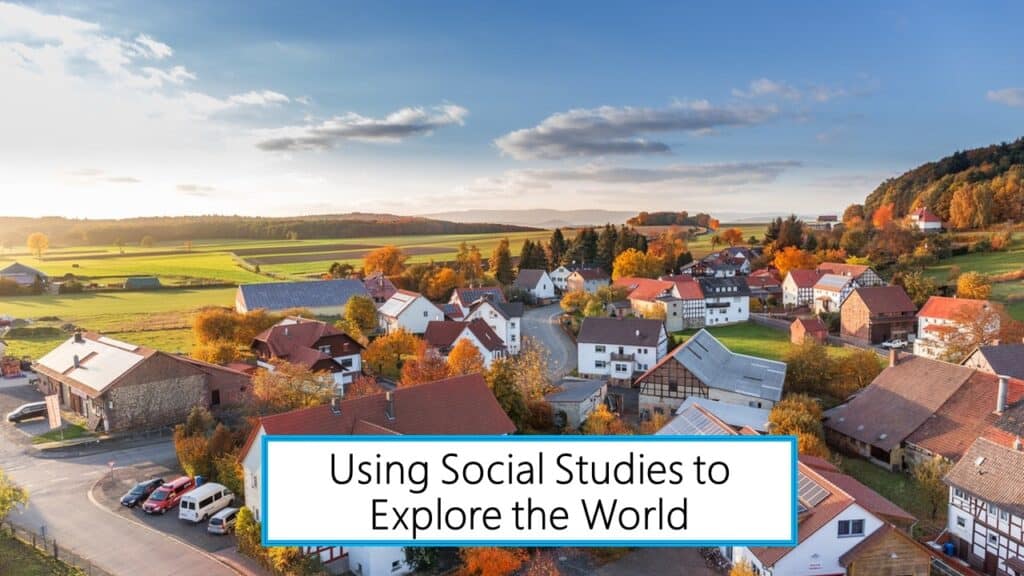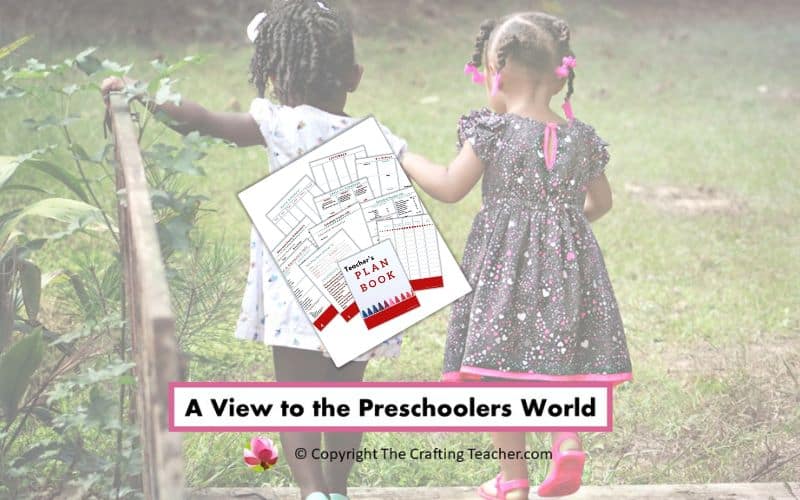Affiliate Disclosure: “This post contains affiliate links, which means I receive a small commission, at no extra cost to you, if you make a purchase using those links.”
Integrating the VPK Domains Through Science
Using children’s fascination with their world to foster the VPK domains
Many teachers find science scary and difficult to handle in preschool. Many do not realize their daily classroom explorations give their children an authentic and solid foundation for future critical thinking and scientific investigations.
Young children are curious about the world around them. They want to know the answers to “how” and “why”. We, as teachers, can foster our children’s curiosity about science by engaging in conversations, reading books, and allowing them to observe and explore the world around them. This helps them find out how things in their environment work. Science for children is a creative and exploratory process in which they can use many forms of knowledge to build theories about their world.
I grew up on a farm and became fascinated by everything around me. This is where my love for Science comes from.
In 2005, after 24 years of teaching Spanish, Science, and Social Studies to elementary children, I became one of the first teachers to start the Voluntary Prekindergarten Program (VPK) in Florida. I became fascinated with this age group and learned more about the domains and how to integrate them.
My goal for this article is to give you an overview of how to do just that in an effortless and fun way.
What are VPK domains?
The Office of Early Learning defines the domains as “areas of development, are a useful way to look at the developmental progression of related skills and abilities of children.”
I. Physical Development
The Physical Development domain refers to children’s physical development, both gross and fine motor skills, and the development of the senses.
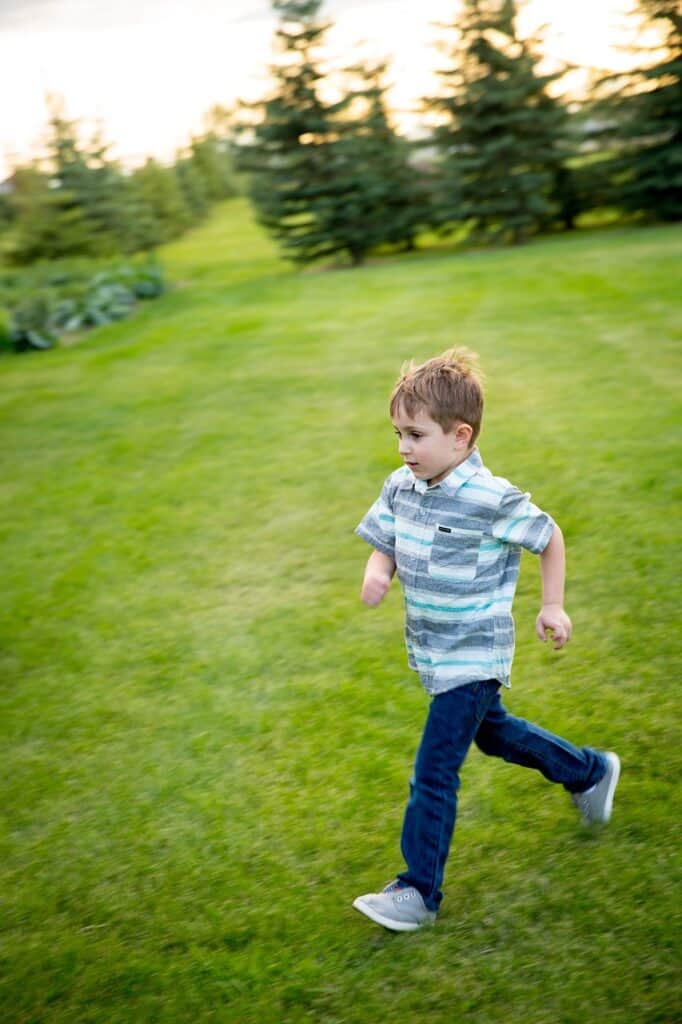
Photo by Pixabay
II. Approaches to Learning
The Approaches to Learning domain refers to children’s emerging skills and behaviors when engaging in learning.
III. Social and Emotional Development
The Social and Emotional Development domain refers to children’s emerging abilities to experience, express, and manage emotions and the ability to establish positive and rewarding relationships with others.
- Work with a friend to recreate a beehive using blocks.
- Prepare “Ants on a log” or another snack in small groups.
- Discuss how bugs make them feel.
IV. Language and Literacy
The Language and Literacy domain refers to children’s emerging abilities to understand and use language, and the knowledge and skills that are the base for reading and writing.

Photo by Andrea Piacquadio from Pexels
V. Mathematical Thinking
The Mathematical Thinking domain refers to children’s emerging abilities to acquire and use strategies to perceive, understand, and solve mathematical problems.
VI. Scientific Inquiry
The Scientific Inquiry Domain The Mathematical Thinking domain refers to children’s emerging abilities to acquire and use strategies to perceive, understand, and solve mathematical problems.
VII. Social Studies
The Social Studies Domain refers to children’s emerging sense of self-identity and how people relate to each other in a society.
VIII. Creative Expression Through the Arts
Creative Expression Through the Arts refers to children’s emerging modes of thought and self-expression. It also provides ways for children to learn and use skills in other domains.
If you want to learn more about the domains or areas of development, which are each domain’s components, sub-components, standards, and benchmarks, the Office of Early Learning has very clear explanations of all of them HERE.

Why Using Science is a Good Way to Integrate the Domains?
A preschool teacher can use science activities and research as a daily experience, which is also a great way to build oral vocabulary, develop reading readiness, and fuel literacy development. However, science activities must be hands-on, engaging, uncomplicated, and fun. They must take into consideration that preschoolers learn and understand best when they can see, touch, feel, and manipulate safely.
Dr. Laura Martin, Director of Science Interpretation at the Arizona Science Center says: “Science is a way to find out about the world through exploration. Children are investigators by nature. When you nurture children’s natural desire to investigate you are helping them to develop scientific minds. We create environments that engage the senses of young children and allow them to sort and classify, handle, observe, build, and ask questions, which is how they construct ideas about the physical and natural world.”
“Children acquire scientific knowledge by ‘construction’ not by instruction (Kamii & Lee-Katz, 1983). They must create an explanation of observed phenomena or the outcomes of the experiments internally—an explanation that holds the personal meaning” (Trawick-Smith, p. 203).
Science Approach versus Literacy Approach
Some professionals believe that language and literacy should be the focus during preschool, but I think that language and literacy learning must be about something that makes sense to the children, therefore, it should be part of a coherent, integrated curriculum that takes into consideration all the VPK domains.
Many researchers have found that it is easier for children to learn language and literacy skills when they are allowed to use these skills in real situations (Goodman 1984; Teale & Sulzby 1984).
Now, the question is… how can preschool teachers use Science to integrate the domains in the VPK classroom?. The answer is that Science can be incorporated into many, if not most, of the activities that they already do. Using curiosity and wonder makes Science learning come alive. This also helps the children promote concept development and fosters higher levels of instructional support.
How to use Science to Integrate the VPK Domains?
I understand that for some teachers it could be challenging to base a lesson plan on scientific thinking, but this approach does not have to be used all the time or every day. My love for Science and my experience as a VPK teacher for many years have taught me that certain lessons just beg to be taught using Science, like those related to animals, weather, and seasons, for example.
I think a good way to show you how to tie the domains through Science is using a theme like “Bugs”, for example. The next ideas will give you good and easy examples of how to do it:
1. Physical Development
- Fly (dance) buzzing like bees.
- Hop like a grasshopper.
- Have a race jumping as grasshoppers.
- Provide Word Wall cards and have them copy the names of the bugs.
- Buzz like a bee, flutter like a butterfly or crawl like a caterpillar.
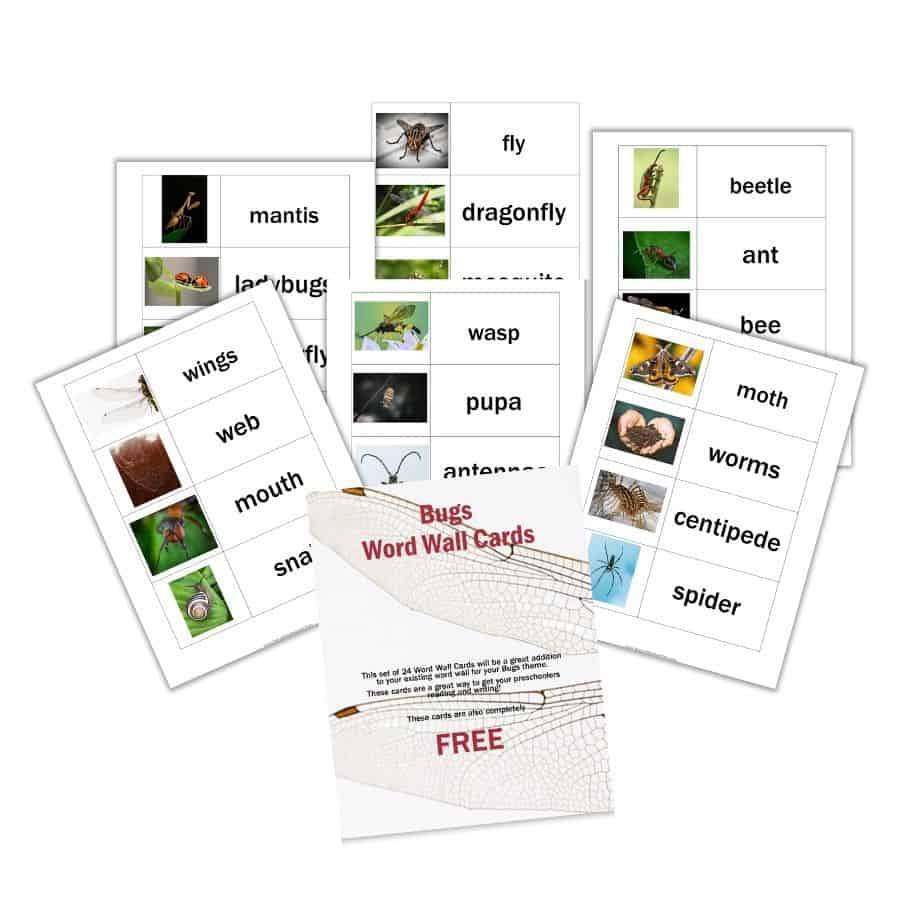
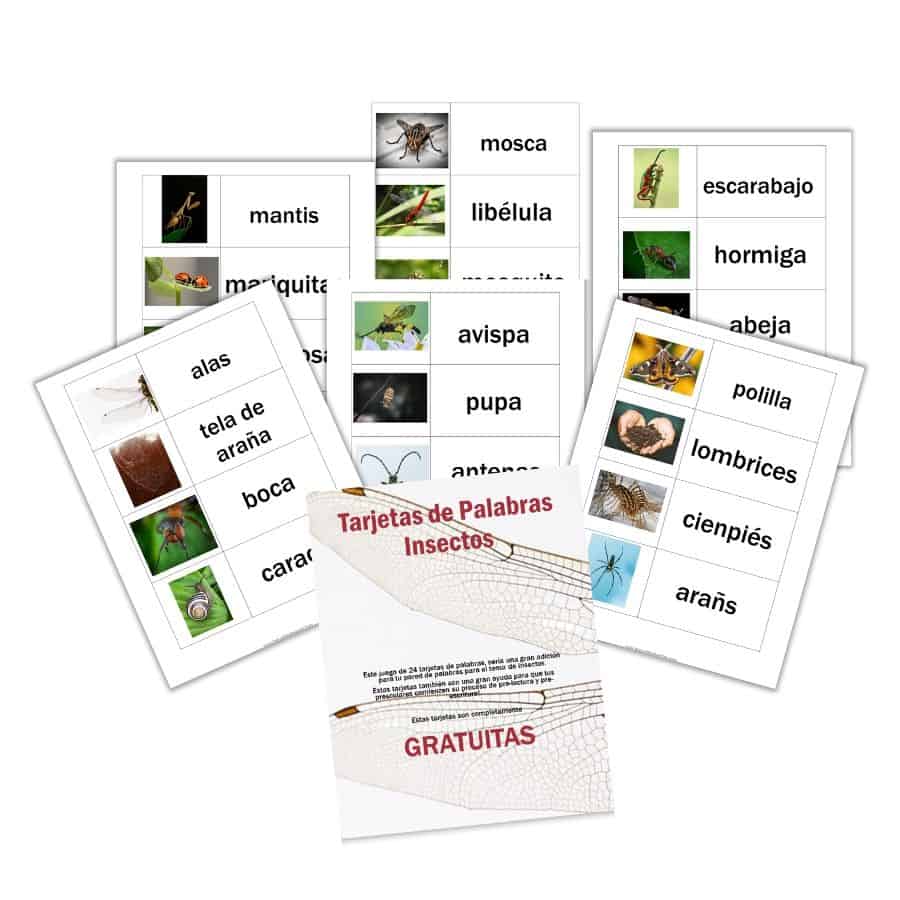
2. Approaches to Learning
- Talk about the characteristics of both insects and their personal experiences.
- Create a KWL chart about bugs.
3. Social-Emotional
- Work with a friend to recreate a beehive using blocks.
- In small groups prepare “Ants on a log” or a snack.
- Discuss how bugs make them feel.
4. Language and Literacy
- Read books about bugs.
- Spell the word bee.
- Write a group story about a bug.
- Write the name of a bug.
- Sing kids’ songs about bugs and insects.
- Clap the syllables of the bugs’ names.
- Copy the word fly using magnetic, wooden, or foam letters.
5. Mathematical Thinking
- Count how many bugs are in the Counting Jar.
- Observe a real bee with magnifying glasses and count its legs.
- Use pattern blocks to recreate a beehive.
- Discuss children’s favorite bugs and make a chart with it.
- Play the “How Many Am I Hiding?” game.
6. Scientific Inquiry
- Make a word web about bugs.
- Compare bees and wasps.
- Discuss facts about different bugs.
- Name the insect body parts.
- Discuss the characteristics of insects.
- Raise butterflies.
- Sort bugs in two piles: insects and other bugs.
- Study ants’ habitat with an ant farm.
- Bring a real Earthworm to class to observe.
7. Social Studies
- Visit the local butterfly garden.
- Invite an entomologist to visit the preschool and talk about his work.
8. Creative Expression Through Arts
- Make coffee filter butterflies.
- Make a sculpture of a spider with play-dough.
- Paint ladybugs using balloons and cotton swabs.
- Create a spider web with a paper plate and yarn.
- Draw your favorite bug.
- Create a spider with egg cartons and pipe cleaners.
Conclusion
The use of Science in the VPK classroom does not have to be complicated or used every day. It does not have to be scary or over the top. I believe Science is a useful tool to tie up all the domains in the VPK classroom, simply because of a child’s natural fascination for his or her world.
And you probably already know that it is very hard to create a learning environment if the child is bored or not interested. Students like to have fun while learning so the process has to have meaning for them.
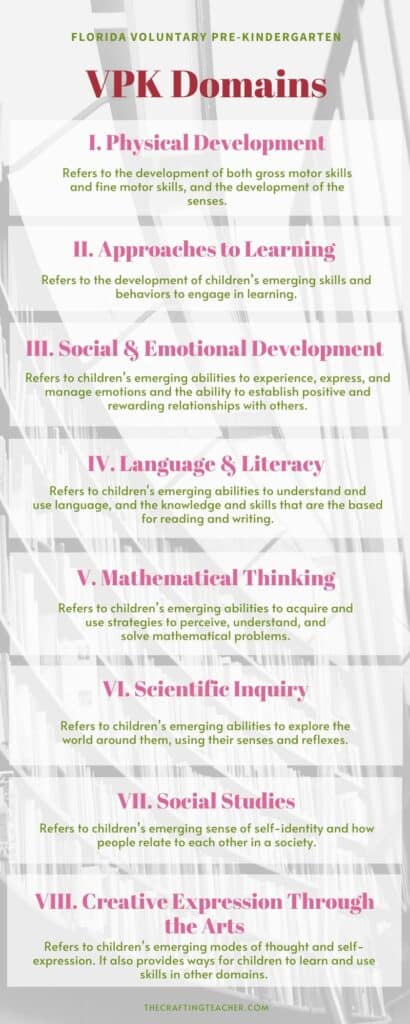
When teachers increase their knowledge of what Science is at the preschool level, they will become more comfortable using it to develop their lesson plans. It is also great to encourage students to become actively involved in exploring and investigating things, in and out of the classroom. This will lead to an increase in student engagement, language use, and language skills and more positive peer interactions.
Be happy, safe, and creative. I wish you well.
Love,

P.S. If you like this article, please share it and let me know if you try some of these activities and what happens. I am very interested in what you have to say. Thank you!

